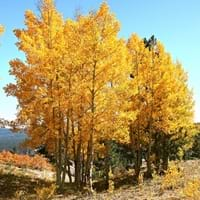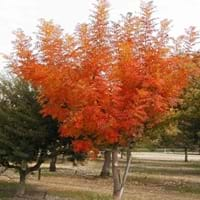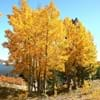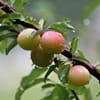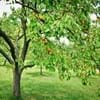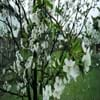Life Span
Perennial
Perennial
Origin
North America
China
Types
Not Available
Not Available
Habitat
Forest margins, gardens, Roadsides, Woodlands
Mountains, Rocky areas
USDA Hardiness Zone
1-8
6-9
Sunset Zone
A1, A2, A3, 1a, 1b, 2a, 2b, 3a, 3b, 4, 5, 6, 7, 14, 15, 16, 17, 18, 19
4, 5, 6, 7, 8, 9, 10, 11, 12, 13, 14, 15, 16, 17, 18, 19, 20, 21, 22, 23
Habit
Upright/Erect
Oval or Rounded
Flower Color
Not Available
Red, Green
Flower Color Modifier
Bicolor
Bicolor
Fruit Color
Brown
Red, Blue, Green, Dark Blue, Black
Leaf Color in Spring
Blue Green, Dark Green
Green, Light Green
Leaf Color in Summer
Blue Green, Dark Green
Green, Dark Green
Leaf Color in Fall
Yellow, Blue Green
Red, Orange, Pink
Leaf Color in Winter
Not Available
Not Available
Leaf Shape
Heart-shaped
Pinnate
Plant Season
Spring, Summer, Fall
Summer, Fall
Sunlight
Full Sun
Full Sun, Partial Sun
Type of Soil
Clay, Loam, Sand
Clay, Loam, Sand
The pH of Soil
Acidic, Neutral
Acidic, Neutral, Alkaline
Soil Drainage
Average
Well drained
Bloom Time
Spring
Early Spring, Spring
Tolerances
Salt
Pollution, Drought, Soil Compaction
Where to Plant?
Ground
Ground
How to Plant?
From Rhizomes
Divison, Seedlings, Stem Planting, Transplanting
Plant Maintenance
Medium
Medium
Watering Requirements
Prefer drip-irrigation instead of Over-head watering, Water more in summer
Average Water Needs, Water once every two or three weeks, Water when top layer of soil becomes dry
In Summer
Lots of watering
Lots of watering
In Spring
Moderate
Moderate
In Winter
Average Water
Average Water
Soil pH
Acidic, Neutral
Acidic, Neutral, Alkaline
Soil Type
Clay, Loam, Sand
Clay, Loam, Sand
Soil Drainage Capacity
Average
Well drained
Sun Exposure
Full Sun
Full Sun, Partial Sun
Pruning
Prune to control growth, Remove deadheads, Shape and thin as needed
Remove damaged leaves, Remove dead branches, Remove dead leaves
Fertilizers
20-20-20 amount, All-Purpose Liquid Fertilizer, Apply 10-10-10 amount
All-Purpose Liquid Fertilizer
Pests and Diseases
Insects
Insects, Red blotch, Rodent
Plant Tolerance
Drought
Drought, Frost
Flowers
Insignificant
Insignificant
Flower Petal Number
Not Available
Not Available
Foliage Texture
Medium
Medium
Foliage Sheen
Glossy
Glossy
Invasive
Sometimes
Sometimes
Attracts
Not Available
Birds
Allergy
no allergic reactions
no allergic reactions
Aesthetic Uses
Showy Purposes
Beautification, Landscape Designing, Showy Purposes
Beauty Benefits
Not Available
Not Available
Environmental Uses
Air purification
Air purification
Medicinal Uses
No Medicinal Use
No Medicinal Use
Part of Plant Used
Bark, Pulp
Seeds, Stem
Other Uses
Used in paper industry, Wood is used for making furniture, Wood is used in construction
Application in Furniture, Decoration Purposes, Showy Purposes, Used in biomass, Used in Furniture
Used As Indoor Plant
No
No
Used As Outdoor Plant
Yes
Yes
Garden Design
Shade Trees
Shade Trees, Street Trees
Botanical Name
POPULUS tremuloides
PISTACIA chinensis
Common Name
Quaking Aspen
Chinese Mastic, Chinese Pistachio
In Hindi
Quaking Aspen
चीनी पिस्ता
In German
Zitterpappel
chinesische Pistazie
In French
tremble
pistache chinois
In Spanish
Temblor Aspen
pistacho chino
In Greek
τρεμώδεις Aspen
Κινέζοι Φιστίκι
In Portuguese
Quaking Aspen
Pistache chinês
In Polish
Quaking Aspen
Chiński Pistacje
In Latin
Tremens Quisque
LENTISCUS Chinese
Phylum
Tracheophyta
Magnoliophyta
Class
Magnoliopsida
Magnoliopsida
Order
Malpighiales
Sapindales
Family
Salicaceae
Anacardiaceae
Clade
Angiosperms, Eudicots, Rosids
Angiosperms, Eudicots, Rosids
Subfamily
Not Available
Not Available
Number of Species
Not Available
Season and Care of Quaking Aspen and Chinese Pistachio
Season and care of Quaking Aspen and Chinese Pistachio is important to know. While considering everything about Quaking Aspen and Chinese Pistachio Care, growing season is an essential factor. Quaking Aspen season is Spring, Summer and Fall and Chinese Pistachio season is Spring, Summer and Fall. The type of soil for Quaking Aspen is Clay, Loam, Sand and for Chinese Pistachio is Clay, Loam, Sand while the PH of soil for Quaking Aspen is Acidic, Neutral and for Chinese Pistachio is Acidic, Neutral, Alkaline.
Quaking Aspen and Chinese Pistachio Physical Information
Quaking Aspen and Chinese Pistachio physical information is very important for comparison. Quaking Aspen height is 1,220.00 cm and width 610.00 cm whereas Chinese Pistachio height is 760.00 cm and width 760.00 cm. The color specification of Quaking Aspen and Chinese Pistachio are as follows:
Quaking Aspen flower color: Not Available
Quaking Aspen leaf color: Blue Green and Dark Green
Chinese Pistachio flower color: Red and Green
- Chinese Pistachio leaf color: Green and Light Green
Care of Quaking Aspen and Chinese Pistachio
Care of Quaking Aspen and Chinese Pistachio include pruning, fertilizers, watering etc. Quaking Aspen pruning is done Prune to control growth, Remove deadheads and Shape and thin as needed and Chinese Pistachio pruning is done Remove damaged leaves, Remove dead branches and Remove dead leaves. In summer Quaking Aspen needs Lots of watering and in winter, it needs Average Water. Whereas, in summer Chinese Pistachio needs Lots of watering and in winter, it needs Average Water.
